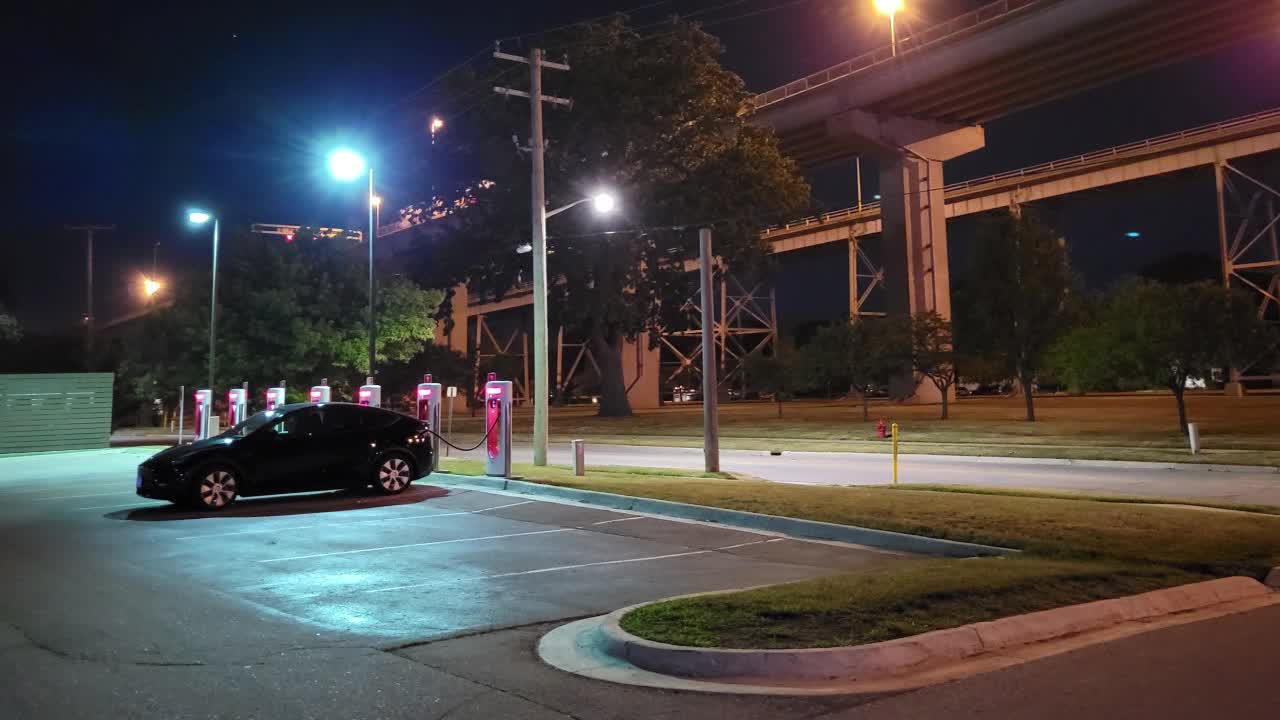Minnesota moves forward with plan to expand electric vehicle charging network
The Biden Administration has set a goal of installing electric car chargers across 75,000 miles of highway nationwide through the National Electric Vehicle Infrastructure rollout.
The program is funded by the Bipartisan Infrastructure Law. The federal government has approved plans for all 50 states, including Minnesota.
There are currently about 535 public electric vehicle charging stations in Minnesota. A total of 88 are Tesla charging stations, according to the U.S. Department of Energy. Only a fraction of the total number of public stations are DC fast chargers.
“Minnesota has a goal that 20% of the light duty vehicles on the road are electric by 2030,” said Siri Simons, a sustainability program supervisor with the Minnesota Dept. of Transportation. “There’s a gap there, right? There’s certainly not enough charging stations to support that level of transportational electrification so expanding the network would help us get closer to that goal.”
Minnesota has been allotted $68 million over the next five years to build out infrastructure.

A Tesla sits at a charging station during an interstate road trip (Photo courtesy: Holm family).
The state’s recently approved plan focuses on the I-35 and I-94 corridors, from Fargo to Saint Paul and Albert Lea to Duluth. Both are existing Alternative Fuel Corridors.
“The goal is really to create that seamless experience for people driving within our state but also, you know, across state lines,” said Simons.
The sites have to be 50 miles apart and within a mile of the highway. MnDOT’s plan acknowledges the extreme cold in Minnesota can reduce range by 40%.
“We are spacing ours slightly closer together because of in part extreme weather, understanding there are some reductions in range based on extreme weather conditions,” said Simons.
MnDOT will hold a competitive process to select who will provide the equipment, maintain it and host it at the 16 sites.
“That might be a gas station or a retailer or even a local government that is willing to raise their hand and say we are willing to host the fast charger at our property,” said Simons. “We’re trying to have one streamlined process where we’re selecting the site host, the installer and the operator all as part of one team.”
The goal is to install the chargers by 2024.
Minnesota Auto Dealers Association President Scott Lambert welcomes the additional infrastructure as demand for electric vehicles increases.
“At our auto show, we gave more test drives in electric vehicles than we ever have before,” he said. “Infrastructure is the major hurdle.”
Lambert hopes to see the additional chargers installed in high traffic areas, such as shopping centers or office buildings.
“We’ve got a long way to go,” he said. “Just to get them on the corridors, major arteries would be a big, big step but then we’ve got to start branching out.”
He added, “If they want the kind of adoption they’re talking about they’re going to need fast chargers in every corner in the state.”
Bloomington Tesla owner John Holm hopes the 16 sites will help fill some gaps in the state.
“If there’s no charger for 200 miles, you’d want to put one in the middle,” said Holm. “There’s a lot of gaps in northwest Minnesota that need some filling.”
About a year and a half ago, his family went all-electric. They bought both a used and a new Tesla. The new model seats seven people and replaced the family’s minivan.
“We just dove right in,” said Holm. “We haven’t looked back.”
The family has traveled extensively, including to Brainerd, Grand Marais, Duluth, Iowa, Wisconsin, the Upper Peninsula, and even London, Ontario.
The 850 mile trip to Canada required six charging stops altogether. They relied on Tesla’s fast-charging network.
“You’ll want to have something that’s at least 150 kilowatts, which is like a firehouse compared to a standard [charger] would be your kitchen faucet,” said Holm. “On a road trip, you want a firehose.”
Minnesota’s plan to expand the fast charging network across the I-35 and I-94 corridors accounts for about $10 million of the allotted $68 million. There is also a 20% non-federal match, which brings the total first-year investment to about $12 million, according to Simons.
“This equipment is required to be functional 97% of the time and when we are collecting information from applicants, we’re going to be asking them can you meet that requirement and can you prove that you have met that requirement in the past?” she explained. “Applicants will need to tell us how much they’re going to charge users and then we’ll make sure that price is available for drivers.”
There will be quarterly and annual reporting requirements, according to Simons.
“We’ll be taking everything we get from our providers over the course of the year and then submitting it to the federal government so they can help ensure we’re running the program appropriately,” she said.